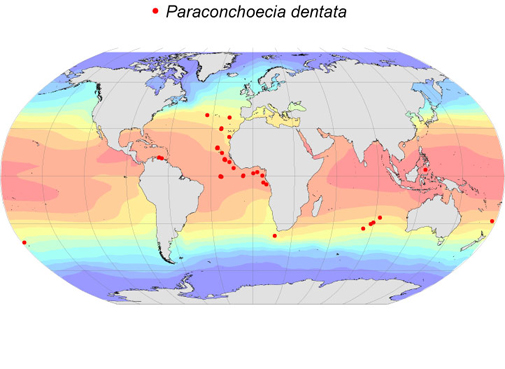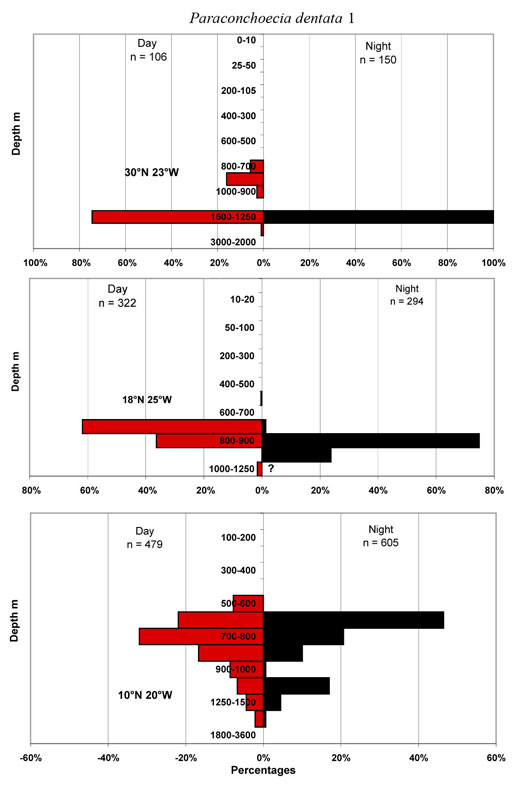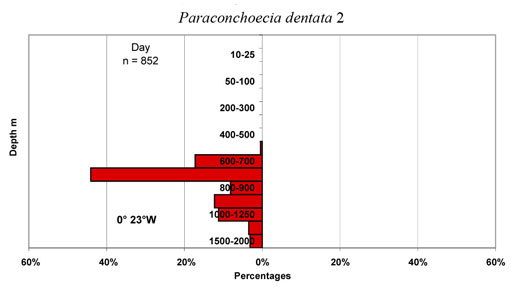Atlas of Atlantic Ostracods
Taxon details
Paraconchoecia dentata (Müller, G.W., 1906)
- Order:
- MYODOCOPA
- Suborder:
- Halocypridina
- Family:
- Halocyprididae
- Subfamily:
- Conchoecinae
- Size range (females):
- 1.9-2.1 mm
- Size range (males):
- 1.7-1.9 mm
- Depth:
- meso-/bathypelagic
Notes
68 records
Müller (1906) placed this species in his ‘dentata group’ together with its larger sibling P. cophopyga, remarking that it resembles P. oblonga, P. spinifera and P. echinata. Consequently Poulsen (1973) placed it in Paraconchoecia. However, there are a number of significant differences, for example in males the most ventral of the three terminal setae on the sixth limb is very short and lacks long filaments, and the b-seta on the first antenna is the longest of the terminal setae, including the e-seta. Hence P. dentata and P. cophopyga should probably be classified in a separate genus. The bathymetric profiles show that at 30°N dentata is a deep mesopelagic to bathypelagic species living at depths of 700-1500m, but towards the Equator it shoals to 600-900m, possibly in response to the equatorial doming of the isotherms. The map shows that the majority of the records are from the Atlantic between the equator and 38° latitude, but Müller (1906) recorded it at a few Indian Ocean stations and Poulsen (1973) at two stations in the Pacific.
| Equator | n | Mean mm | s.d. | Range mm |
|---|---|---|---|---|
| Female | 183 | 1.997 | ± 0.050 | 1.88-2.10 |
| Male | 124 | 1.908 | ± 0.036 | 1.72-1.88 |
| A-1 | 298 | 1.480 | ± 0.043 | 1.38-1.58 |
| A-2 | 75 | 1.056 | ± 0.029 | 1.00-1.14 |
| A-3 | 4 | 0.755 | 0.72-0.82 |






